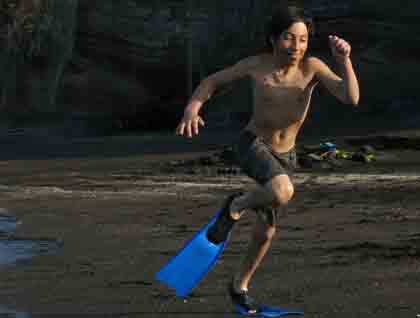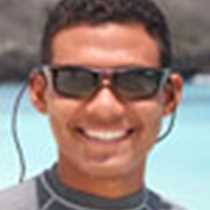We left the western islands for an island with some more human history. Today we visited Santiago, exploring three different locations to discover the best of the island.
This island represents a lot to the natural history knowledge due to the visit of Charles Darwin in 1835 during the HMS Beagle’s voyage around the world. This is where the famous naturalist spent most of his time collecting specimens while the Beagle was collecting water before they left to never return. Santiago had a human settlement for several years during the 1920s which ran a salt mine that later closed because of the hard life conditions.
So, just like early expeditions, we set foot on the island before the sun rose for a walk on a place called Espumilla Beach. It is named after the fishermen who on every journey here found the foam of the waves that break. This beach is one the most popular places for Pacific green sea turtles to nest during the night, and that is one of the reasons why we take the early walk. Right after we landed we identified several tracks from females that finished their nests the night before and went back to the water. Inside the island we found a lush green forest of incense trees and the top predator on these islands: a Galápagos hawk, feared by every animal living around including hatchling turtles.
Later we began our after-breakfast water activities, first with kayaking along the cliffs of Buccaneers’ Cove followed by snorkeling. We found more white-tipped sharks, tropical fish, and rays.
During the afternoon our floating home moved again to Puerto Egas. Because of the different needs we split the groups into beachgoers, who wanted enjoy a fun and relax time with sea lions, water and sand. Our guests who were interested in a hike spent time exploring the shoreline. Several lava tunnels here offer shelter to escape the heat for Galápagos fur seal that were hunted centuries ago for use of their coats by the fashion industry. After the water goes down you can see tidal pools where marine iguanas relax, some fish are trapped so herons can enjoy an easy meal, and other species spend their lives.
At the end of the day we all enjoyed another spectacular sunset that the islands prepared for the joy of our guests.







